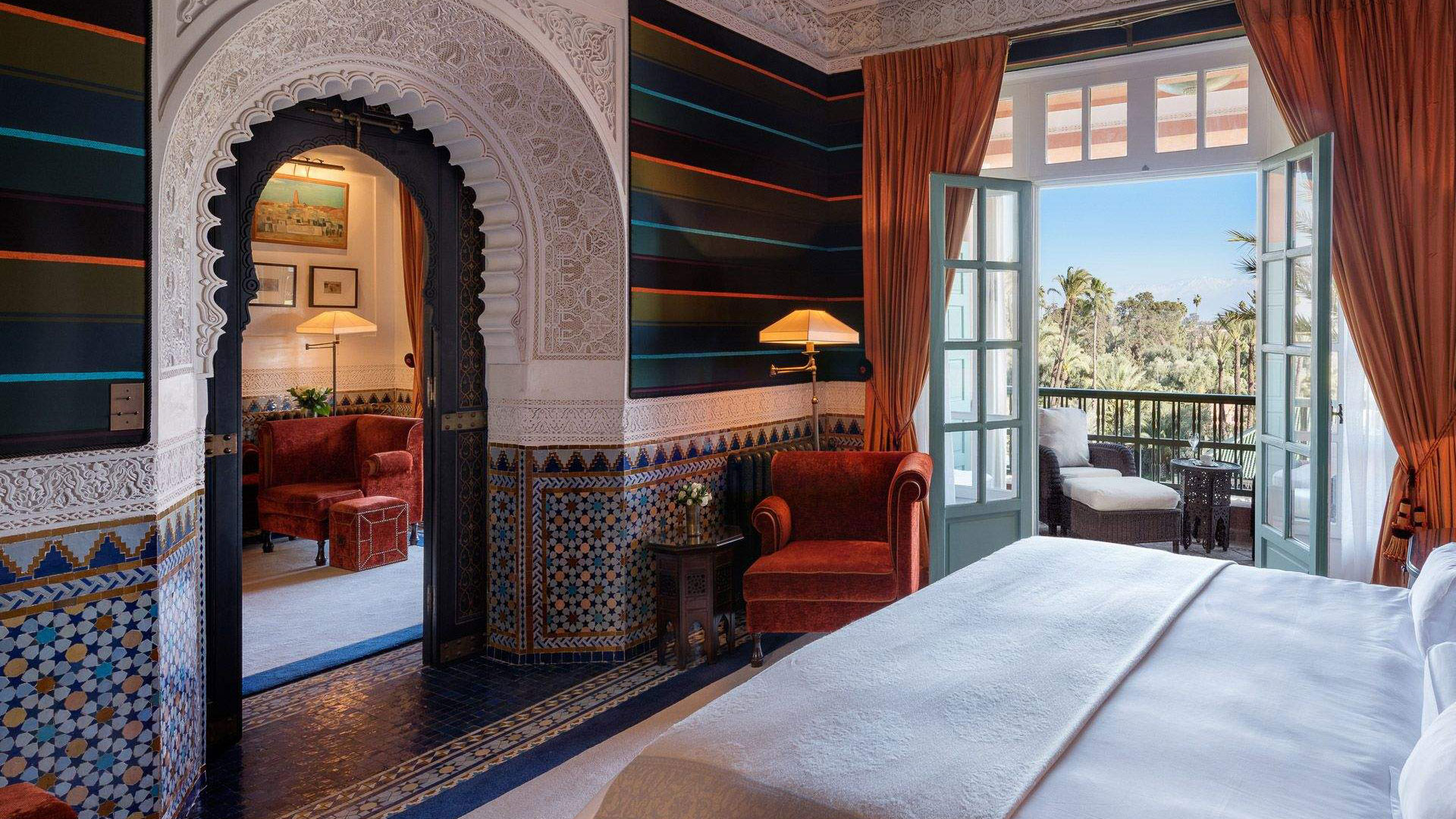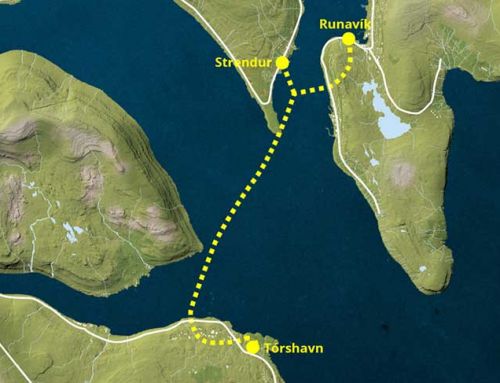
Winston Churchill wrote in 1950 in a letter to his wife Clementine: “It is a marvellous place, one of the best hotels I have ever visited”. The British statesman was referring to the five-star Hotel de La Mamounia on Avenue Bad Jdid in Marrakech, Morocco. In 2021 and for the third time, the accommodation also earned a distinction, voted by the readers of the reputable Condé Nast Traveller publication, as the best hotel in the world and, by extension, in the Middle East and Africa. But the fascinating history of this grandest of grand hotels, which now celebrates its 100th anniversary, begins in 1923. The place where it is located has its roots in a past that goes back many centuries.
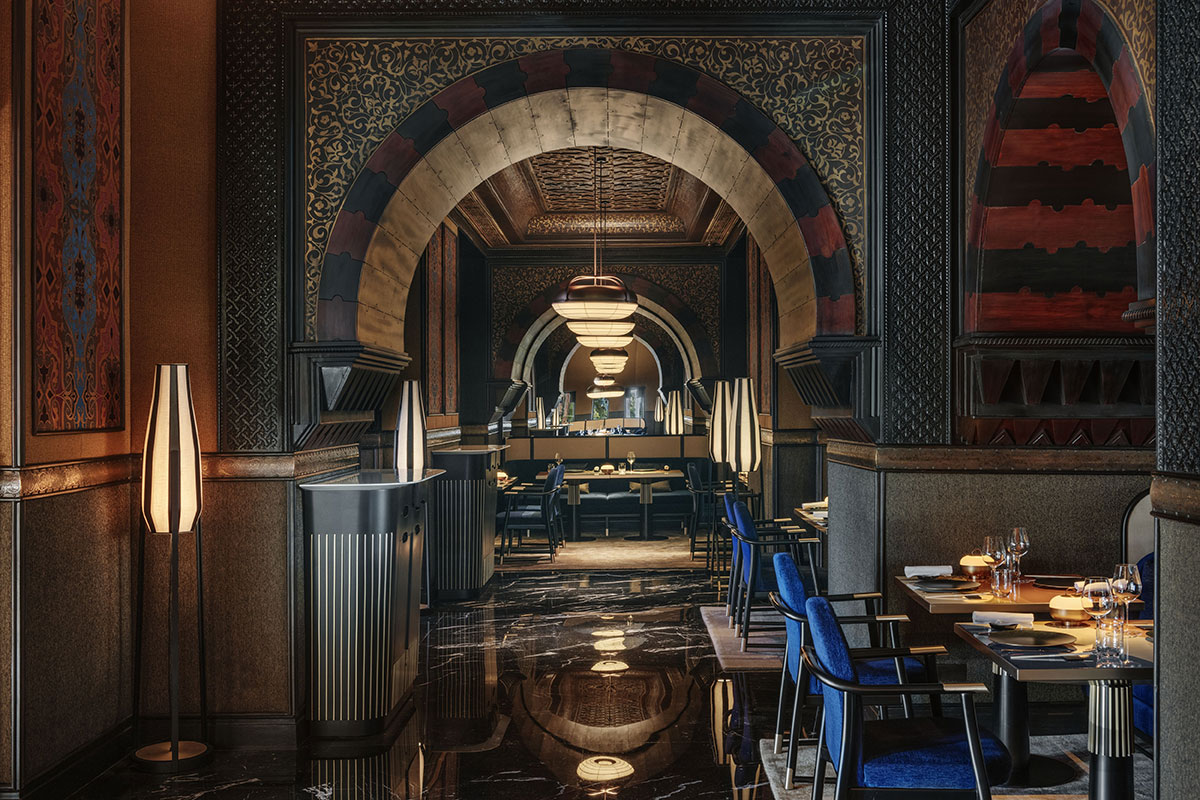
In fact, in the 12th century, the land on which La Mamounia stands first belonged to Abd al-Mu’min, the first caliph and founder of the empire of the Berber dynasty of the Almohads (1145-1248). Whilst the land remained unchanged, the human events it witnessed did not. The Almohad dynasty was succeeded by the Marinid dynasty (1244-1465), followed by the Saadid dynasty (1554-1659) after various Portuguese incursions, and finally, after a long period of regional divisions caused by their weakening, the Alawite dynasty (from 1666 to the present day, whose representative, Muhammad VI, is the 23rd ruler of the succession) ousted the Almohad dynasty.

So, as early as the 18th century, the grounds of what is now La Mamounia, attached to the ramparts of the old town, belonged to Sultan Mohammed Ben Abdallah (Mohammed III) and his wife Lalla Fatima. It so happened that Mohammed III had beautiful gardens designed on these lands in order to offer them as a wedding gift to his son, Prince Mamoun and the prince made use of them as a venue for opulent open-air feasts.
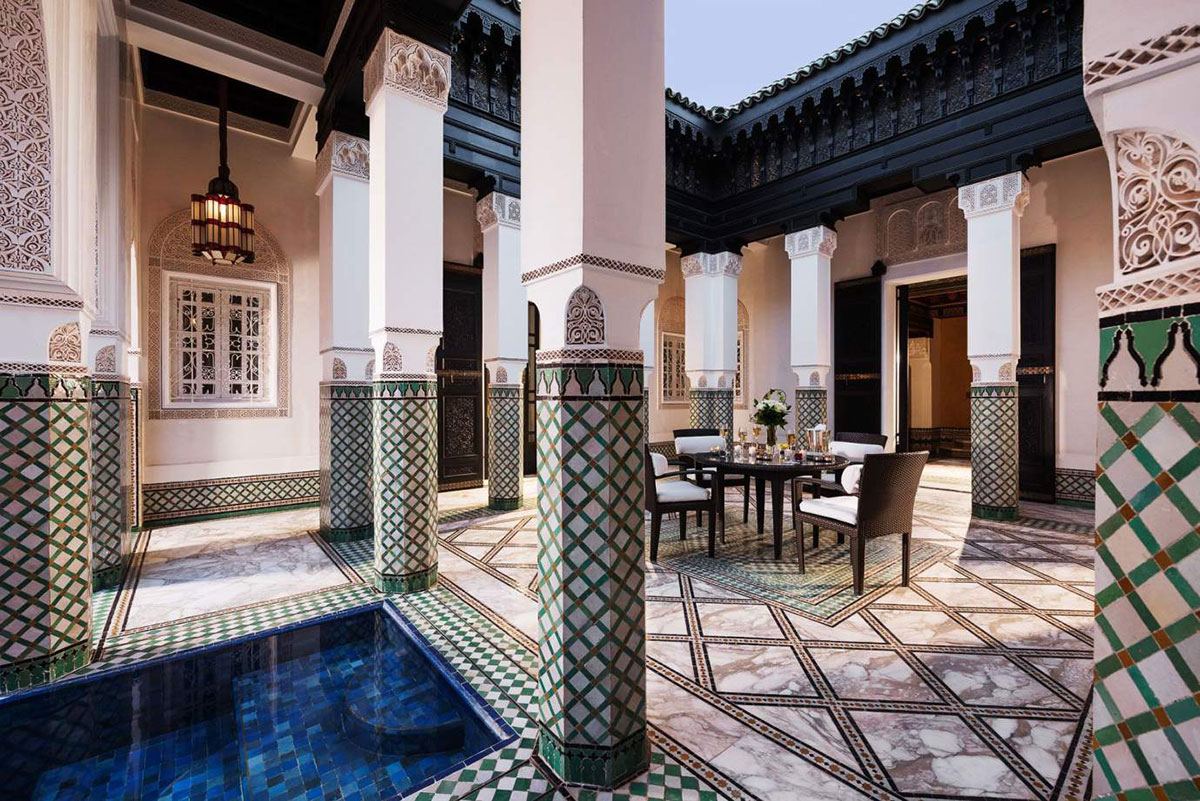
The first building was erected in the beautiful garden during the 19th century, first under the title of the Pavillon de la Mamounia and later as the Palais de la Mamounia. However, for unknown reasons, the building was destroyed around 1922. At that time, the Compagnie des Chemins de Fer du Maroc decided to build a hotel on the site. The first version of today’s Hotel de La Mamounia was designed by the French architects Henri Prost and Antoine Marchisio, who combined ancestral Moroccan architecture with the Art Deco style that was so fashionable at the time. According to a quote by the writer Khireddine Mourad, to which the hotel itself refers, the project combined the comfort of the West with the splendour of the East, in keeping with “the expectation of escapism that the foreign tourist, already familiar with Oriental literature and exotic reveries, was hoping to find in those places”.
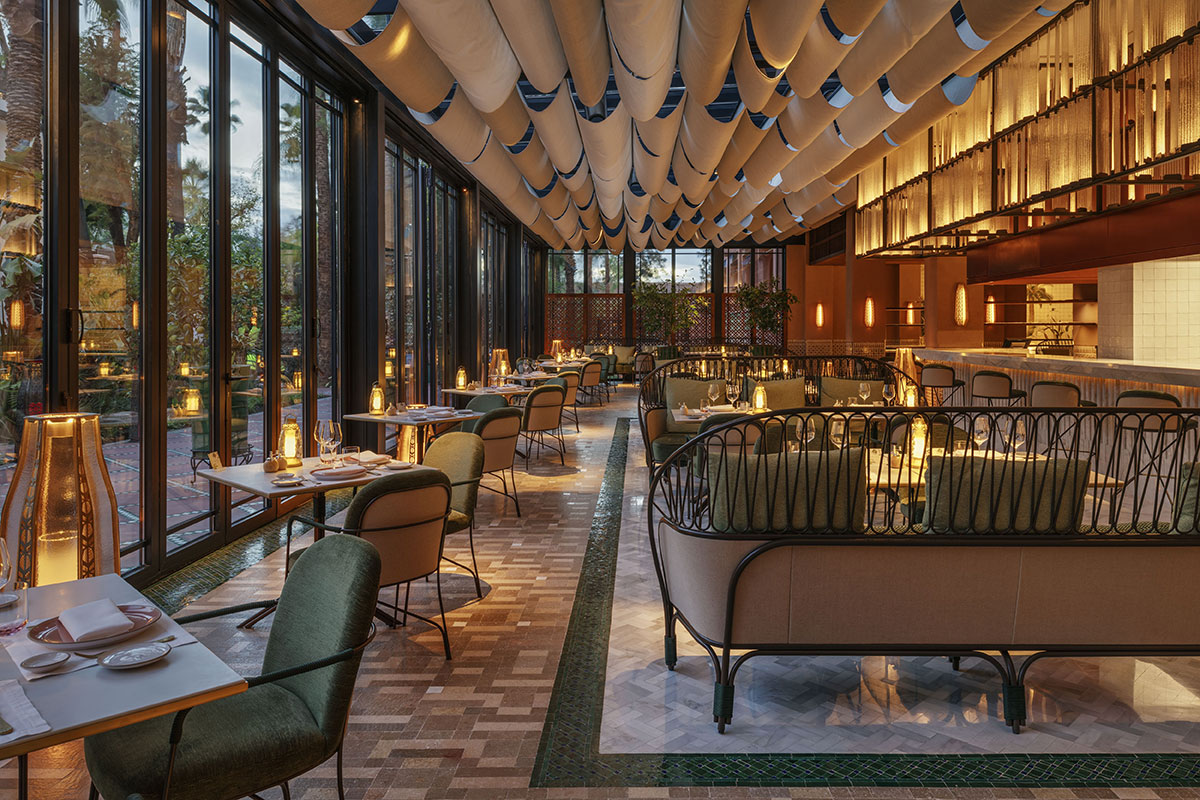
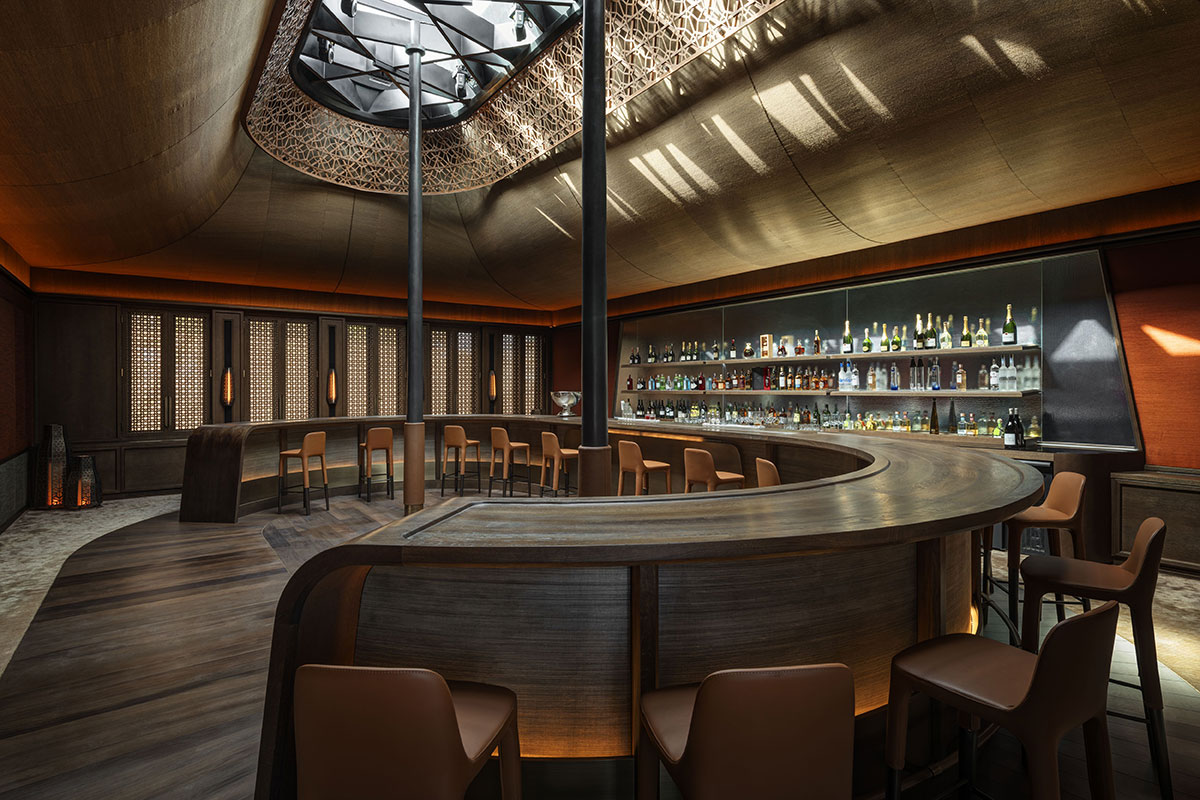
In view of its success, the hotel was extended to 100 keys and its renovation was completed in 1946. In 1953, the place attracted film directors such as Alfred Hitchcock, who shot some scenes from The Man Who Knew Too Much. Word must have spread, because throughout the decade, a good representation of the French film and Hollywood elite, as well as political personalities, came to enjoy the Hôtel de la Mamounia. Charlie Chaplin, Marcello Mastroianni, Claude Lelouch, Francis Ford Coppola among the artists; Franklin Roosevelt and General de Gaulle among the latter. In the 1960s, Yves Saint Laurent, the Rolling Stones and many other writers and artists passed through the hotel. Paul McCartney even composed a song in one of its rooms that was published in 1973: Mamounia.

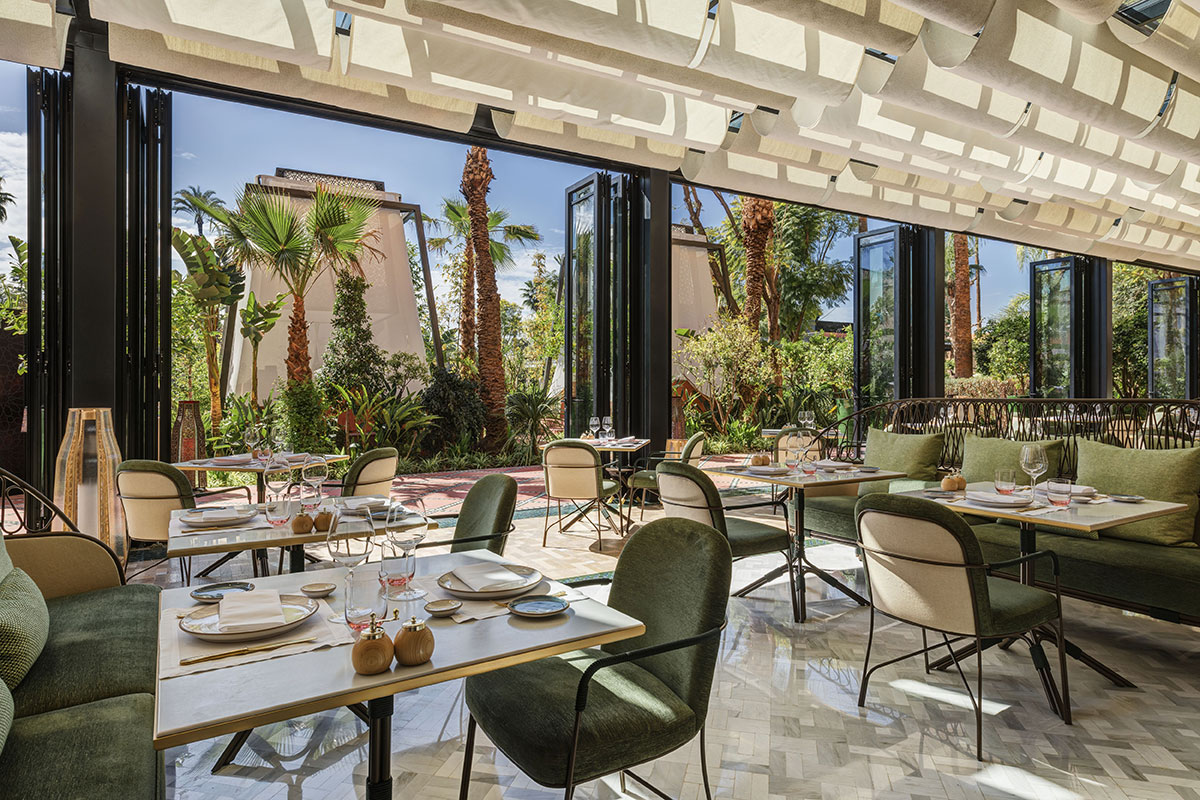
In 2006, the hotel closed for a three-year renovation that is said to have cost 120 million euros. The prestigious designer Jacques Garcia (a French interior designer and architect renowned for his extravagant, opulent style and taste for combining classical and modern elements in sophisticated spaces) was in charge of the interior design and architecture. He set out to restore the hotel’s historical legacy, with the help of Moroccan artists and craftsmen who are experts in Berber arts and traditions. As a result, the Hotel de la Mamounia was reborn in September 2009 with a chiaroscuro and mid-tone ambience, a new Hispano-Muslim style décor and its Arabic-Andalusian architecture. Its facilities now included more than 200 rooms, 3 luxury riads, 4 bars, 2 tea rooms, 4 restaurants (run by chefs Jean-Georges Vongerichten and Pierre Hermé), a cinema, as well as gardens and an enlarged swimming pool. Finally, a 2,500m² spa has been added. And all enveloped by pure lines and arabesque motifs, in an exquisite combination of wood and tadelakt, veined marble and zellige mosaic.

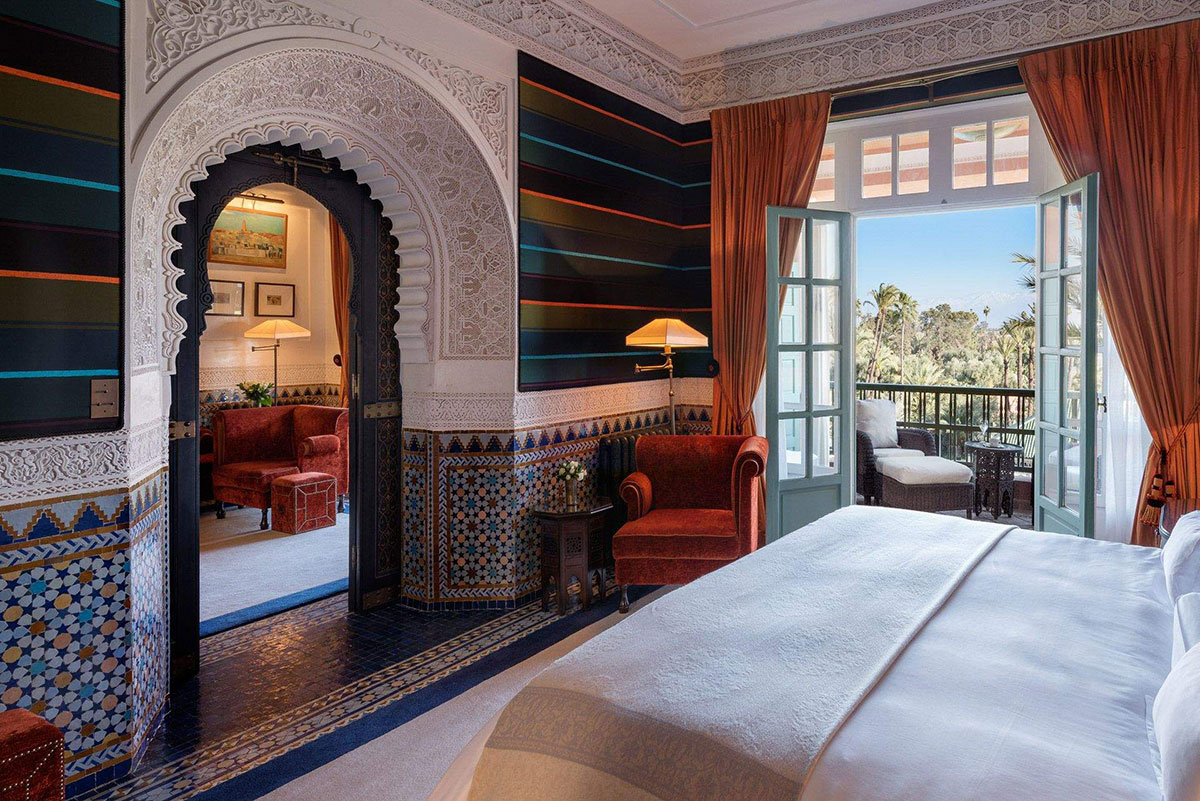
We leave here, for your curiosity, the song that McCartney composed in the hotel: Mamounia.
Sources: Hotel de la Mamounia, Visit Morocco, Wikipedia. Images: Hotel de la Mamounia.
RELATED STORIES
Newsletter

